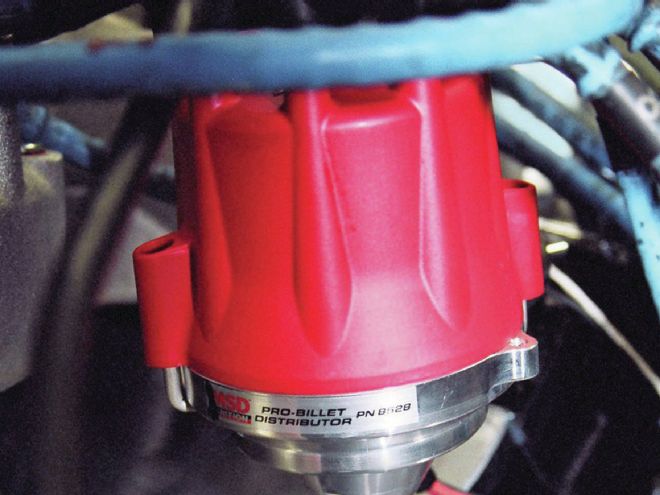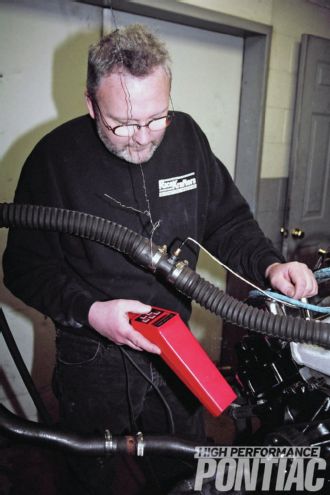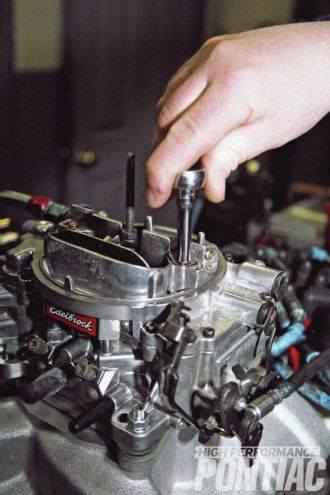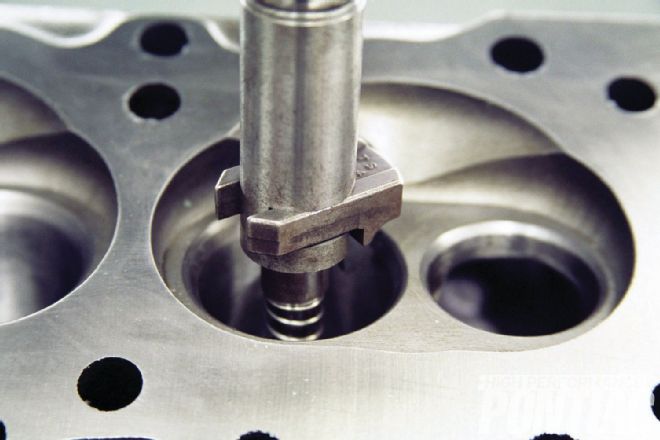
There is probably not a single reader of this magazine who does not want his or her Pontiac’s engine to perform to its best ability regardless of its number of cylinders or cubic inches. To reach that goal, little else is more important than the proper ignition curve. Understanding the theory of spark advance is where the quest begins.
The metric that identifies when the spark plug is going to be arced is the piston’s location in reference to top dead center (TDC). Thus, if the timing specification is 6 degrees before TDC (BTDC), the spark plug will arc when the crankshaft is 6 rotational degrees before the piston is at TDC (BTDC). The piston location is always measured in rotational degrees of the crankshaft since it is attached to it via the connecting rod.
The opposite of BTDC is ATDC or after top dead center. This describes an ignition event that is initiated after the piston reaches TDC and is already traveling downward in the cylinder bore. In engine parlance, when the ignition event is begun BTDC the timing is advanced and when it happens ATDC it is retarded.
With that established, there are four different ignition-timing specifications for a Pontiac engine:
Base timing: The position of the distributor in the engine block. This is checked with the engine idling and in most applications the vacuum hose disconnected from the advance canister.
Mechanical or centrifugal advance: This is the amount of ignition advance that is added to the base timing that is provided by the centrifugal action of the weights in the distributor. As the engine speed increases, the weights pull further out from their rest position and this moves the distributor cam to advance the timing.
Vacuum advance -- The canister that is attached to the distributor and is operated by a vacuum source at the carburetor is the vacuum advance. Engine vacuum is likened directly to load on the engine via the opening of the throttle plates in the carburetor and the speed of the crankshaft. Engine vacuum is strongest at light-load and closed throttle, high-rpm coast-down. The vacuum advance is connected to the distributor breaker plate where either the points or pick-up coil (HEI) is mounted. When the canister receives a vacuum signal and depending on the strength, it rotates the breaker plate to advance the ignition timing. The vacuum advance is used to aid part-throttle, light-load driveability, and fuel mileage.
Total timing or total advance: This is the maximum amount of advance the engine would be able to experience given the proper operating state. It is the sum of the base plus mechanical plus vacuum advance systems. For example:
 <strong>1.</strong> The first step is to document the ignition curve, identifying the base, mechanical, and vacuum- advance rates and total timing.
2. Any major change to the air/fuel ratio has the potential of impacting the flame speed, and thus the rate of advance.">
<strong>1.</strong> The first step is to document the ignition curve, identifying the base, mechanical, and vacuum- advance rates and total timing.
2. Any major change to the air/fuel ratio has the potential of impacting the flame speed, and thus the rate of advance.">
 <strong>2.</strong> Any major change to the air/fuel ratio has the potential of impacting the flame speed, and thus the rate of advance.
3. A change in cylinder-head design or porting of a stock head will alter the in-cylinder turbulence and the required spark advance.">
<strong>2.</strong> Any major change to the air/fuel ratio has the potential of impacting the flame speed, and thus the rate of advance.
3. A change in cylinder-head design or porting of a stock head will alter the in-cylinder turbulence and the required spark advance.">
 <strong>3.</strong> A change in cylinder-head design or porting of a stock head will alter the in-cylinder turbulence and the required spark advance.
<strong>3.</strong> A change in cylinder-head design or porting of a stock head will alter the in-cylinder turbulence and the required spark advance.
The purpose of ignition advance is to allow the flame initiated by the arcing of the spark plug a head start so that it can keep up with the piston as it moves downward in the bore and to allow for the greatest release of chemical energy from the gasoline consumed.
In an engine, the piston travels faster than the flame expands across the bore so it is necessary to give the combustion a head start. This is required so the flame burns and all of the fuel is consumed just as the piston is ready to arrive at bottom dead center. If the flame extinguishes while the piston is still traveling toward the bottom of the bore, then it stops pushing against it and engine power goes down. If the piston reaches the bottom of its travel and the flame is still burning then the heat energy is wasted since it goes out the exhaust valve and into the atmosphere and power is diminished.
In engineering parlance, the ability to alter the ignition curve independently is called degrees of freedom. Thus, a Pontiac engine has three degrees of freedom (tuning) in its ignition system.
A common mistake is to check/adjust the base timing and give little or no thought to the other tuning points. Just because the base timing is set does not mean that the other two areas are correct for your engine combination and fuel used.
If you speak to someone at the major carburetor companies, they may say that most calls to their technical lines are not because there is an issue with the carburetor just sold, but instead it is with the ignition curve/settings. A carburetor cannot do its job properly if the ignition settings are off, but since the enthusiast just bought the carburetor that must be the problem, right? Wrong! The proper ignition setting for your Pontiac is a synergy between the air/fuel ratio, cam profile, compression ratio, cylinder-head combustion chamber, fuel used, and operating state. There is quite a bit more going on than some realize.
The optimal ignition settings vary based on the load on the engine. This is a two-dimensional effect and not strictly crankshaft speed referenced. That is why Pontiac included three degrees of freedom into the distributor, but many of us are guilty of only tuning one—the base timing.
The method to properly tune an ignition curve is based on the intended use of the Pontiac. A dedicated drag car is the easiest to tune since the engine load and operating speed are very narrow—full power from the starting line to the finish line. The most difficult ignition to tune is a street-driven vehicle. This engine will see a multitude of different loads, throttle angles, and engine speeds.
A properly tuned ignition curve on a street Pontiac will reward its owner with sterling performance, but it takes more effort to achieve than a drag-race setting. For this reason, as the author, I suggest that a street Pontiac enjoy a day on a chassis dynamometer with an advance timing light, weight and spring kit, and an adjustable vacuum-advance canister. This will be the best few hundred dollars you ever invested in your engine. If it is not possible to get to a dyno, then the same can be accomplished on the street, but it is much more time consuming and there is no ability to attach quantifiable data to the change—you only think it feels better.
Do not assume that the distributor is set properly in your Pontiac. Age, wear, modifications to the engine, and modern gasoline all demand that the ignition curve be tailored to the current conditions. Just remember the old saying, “Timing is everything!”